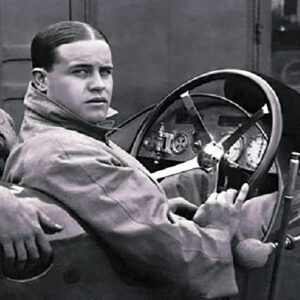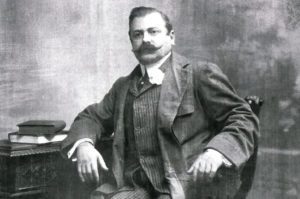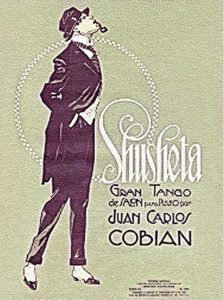Introduction
Shusheta is a famous tango composed by Juan Carlos Cobián. Lyrics were added to it years later, written by Enrique Cadícamo. It was first recorded in 1923 by the composer and his orchestra, then later by other artists.
Shusheta is Lunfardo, the slang of Argentina, especially around Buenos Aires. In this article, we delve into the meaning and origin of the word “Shusheta” and the captivating narrative that surrounds it, explore its musical creators and the impact of censorship during Argentina’s tumultuous years.
The meaning of the song title, “Shusheta”
While Lunfardo was born from a mix of European and African dialects from immigrants to Argentina, much of it comes from Italy. The word “ciuscetta” comes from a Genoese dialect with a rather specific meaning of an “excessively diligent student, who would betray his classmates” – somehting still seen today in universities. Another Genoese term “sciuscetto” means “bellows” like a bellowing voice. It also had another meaning of “snitch” which was the original meaning when it was incorporated into Lunfardo. But the meaning of “shusheta” eventually became “fop” or “dandy” or “a handsome man who exudes confidence or bravado.”
Since Cadícamo’s lyrics for “Shusheta” say “everyone on Florida street saw him, with his leggings, top hat and cane,” we can safely assume that a “fop” or “dandy” was the intended meaning of the word in the song.
History of Shusheta
Juan Carlos Cobián was a versatile Argentine Tango composer, conductor, pianist and lyricist. He was born in Pigüé , Buenos Aires Province , on May 31, 1896, and died in the city of Buenos Aires on December 10, 1953 . He was a trailblazer in the tango world, particularly notable for starting the “romantic tango” trend when he collaborated with Enrique Pedro Delfino on “Salomé,” reshaping the tango landscape of that time.
Enrique Cadícamo was an acclaimed Argentine poet and writer. He was the author of numerous tango, some of which are now considered classics. Cadícamo was born in Luján, Buenos Aires Province, on July 15, 1900 and died in the city of Buenos Aires on December 3, 1999. He was very knowledgeable in poetry of all eras, and his lyrics captured the essence of Buenos Aires life, both Lunfardo and sophisticated poetry.
Cadícamo met Cobián for the first time in 1922, setting the stage for their creative partnership. However, Cobián dissolved his group in August 1923, sold his furniture and traveled to the United States, cahsing after a cabaret singer. This temporarily disrupted their collaboration. Cobián went on to travel around various countries, working, pursing various romantic relationships, then returning to Argentina in 1928. The following year Cobián asked the Cadícamo to put lyrics to various tangos he had wrotten, one of them being “Shusheta.” Juan Carlos Cobián registered the music of “Shusheta” with SADAIC on June 27, 1938.
Who was the “Shusheta?”

The true identity of the “Shusheta” figure remains a subject of debate. Some associate him with a friend of Cobián’s in the 1920’s, a Martín Alzaga Unzué, also known as, “Macoco.” He was a young, handsome, athletic millionaire, the epitome of a “shusheta.”
Cadícamo himself said that the tango lyrics were inspired by “El Payo Roqué,” whose real name was Benjamín Roqué. He was a Cordovan from a prominent family, who received a subsidy granted by the province, because of his protector and friend, President Miguel Juárez Celman. Roqué was charismatic, a frequent guest in high society circles, and always impeccable dressed.

But Benjamín Roque died in total poverty in 1932. According to local legend, “he was everyone’s friend, and a wonderful whistler who had never worked because he lived off the benevolence of his friends.” This would play into the gigolo/playboy aspect of the shusheta in Cadícamo’s lyrics.
Censorship during the 1943 dictatorship
In 1943, the military dictatorship began a campaign to standardize Spanish in Argentina, suppressing Lunfardo in various forms of media, including films, music, radio broadcasts, and newspapers. The dictatorship also sought to censor any references to drunkenness or anything they arbitrarily considered immoral or negative. Shusheta was one of many tangos affected both in title and in its lyrics.
In 1944, Ángel D’Agostino asked Cadícamo to alter the lyrics of “Shusheta” to the official regulations. Cobián authorized changing the title to “El Aristócrata.” It took until February 22, 1946 for Cadícamo registered the new lyrics with SADAIC.
When Ángel D’Agostino and Ángel Vargas recorded this tango on April 5, 1945, they used the new lyrics but left out the fifth and sixth stanzas of the lyrics. This may have been to prioritize the music itself, aligning with the milonguero style of the orchestra. These are perhaps the lyrics best known by the public.
Continued Restrictions
The restrictions on lyrics persisted even after General Perón assumed power. In 1949, executives from SADAIC met with the administrator of Post and Telecommunications to ask if the rules could be annulled, but they were unsuccessful. They then obtained an audience with Perón on March 25, 1949. Perón claimed he was unaware of the existence of those directives. In October 1953, the government approved Radio Broadcasting Law No. 14,241. While this law removed language requirements on radio broadcasts, some restrictions on popular songs continued. SADAIC agreed with the authorities on a list of popular songs that for reasons of good taste or language should not be broadcast on the radio.
Conclusion
To this day, “Shusheta” stands as a example of the dynamic cultural and linguistic evolution in Argentina, reflecting not only the captivating world of tango but also the complex historical forces that shaped its lyrics and melodies.
Recordings of Shusheta, or El Aristócrata.
- Juan Carlos Cobián, 1923.
- Carlos de Sarli, November 8, 1940.
- Ángel D’Agostino y su Orquesta Typica, vocals by Ángel Vargas, April 5, 1945.
- Horacio Salgán for RCA Victor 1951, 68-0173-B .
- Orquesta Puglia-Pedroza, 1951.
- Héctor Pacheco y orquesta dirigida por Carlos García, 1956.
- Edelmiro D’Amario Orquesta, vocals by Ángel Vargas, August 30, 1957.
- Osvaldo Pugliese, 1970 (piano and strings, with no bandoneons).
- Osvaldo Ribó, accompanied on guitar by Hugo Rivas, 1978.
- Roberto Goyeneche y Tango Sextet, December 6, 1983.
- Osvaldo Pugliese, May 19, 1988.

